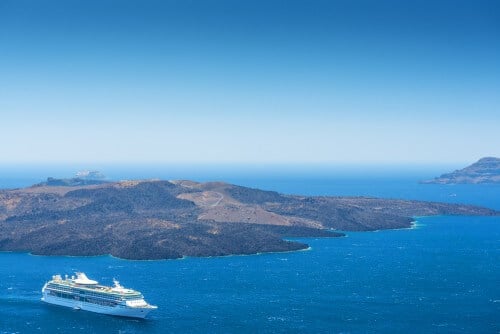In the historic eruption of the volcano in Santorini, which is responsible for changes in the history of the ancient world, large amounts of chlorine and bromine were also emitted which damaged the ozone layer for a long period of time, with all the resulting consequences

The ozone layer is a layer in the atmosphere at a height of 30-20 kilometers above the earth's surface, where the concentration of ozone gas is 30 times higher than its concentration in the rest of the atmosphere. This layer is responsible for blocking over 97 percent of the UV-B radiation, which is dangerous for living creatures. Damage to the ozone layer can cause extensive damage to the health and prosperity of many species.
Many know that human activity was responsible for severe damage to the ozone layer, due to the use of substances that emit halogens, such as chlorine and bromine, which destroy the ozone. For many years the environmental discourse revolved around the hole in the ozone over Antarctica. In the last decade, there has been an improvement in the ozone layer, thanks to the Montreal Protocol which led to the cessation and limitation of the production and use of substances that damage the ozone layer.
New research shows that man is not the only danger to the ozone layer. It is known that volcanoes emit lava and volcanic ash that cause mechanical damage in the area of the volcano, toxic gases and volcanic ash that cause suffocation of living creatures in the vicinity of the volcano, volcanic ash that is dangerous for the aviation industry at ranges of hundreds of kilometers, as well as for the dispersion of sulfur aerosols in the atmosphere, which cool it on a global scale.
The study examined the effect of a large volcanic eruption, such as the eruption of the volcano in Santorini, Greece, on the ozone layer. This well-known strong volcanic eruption caused the destruction of the Minoan culture that flourished in the region, an earthquake in Egypt and some claim that it is even mentioned in Chinese records, due to a very long winter, crop destruction and famine. The researchers discovered that this eruption released a great deal of halogens - chlorine and bromine - and that it was enough for two percent of them to reach the ozone layer, to cause the destruction of 90-20 percent of the ozone in the northern hemisphere. The recovery period of the ozone layer was expected to last about a decade (it is important to note that not all volcanic eruptions have a similar effect on the ozone layer. In the powerful eruption of Mount Pinatubo in 1991, for example, very little halogen was released from the earth's crust).
Besides the contribution of this research to the understanding of historical climatic processes, it also has the ability to estimate possible future damage to the ozone layer as a result of a volcanic eruption.
ל
